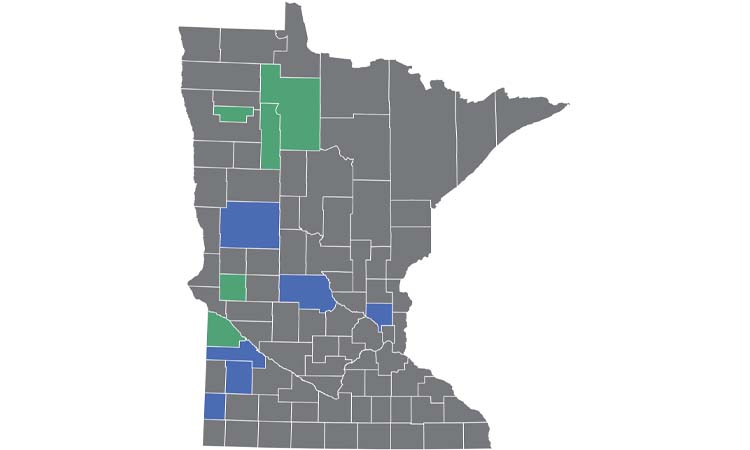Technology
Minnesota Counties Show Surprising Gig Broadband Access Rankings

Access to fast, reliable internet is essential for businesses, regardless of their location. In Minnesota, a recent analysis of broadband access reveals that several counties outside the Twin Cities metropolitan area are outperforming their urban counterparts in providing gigabit internet services. According to data from the state gathered in 2024, these findings highlight the ongoing disparities in internet access across the region.
Gigabit broadband is defined as internet service that delivers speeds of 1 gigabit per second (Gbps), which is considered the current standard for high-speed internet. The rankings show that some rural areas are making significant strides in connectivity, while certain metro areas lag behind. Notably, Anoka County, part of the Twin Cities, ranks as one of the lowest in the state, with only 17% access to gig broadband, placing it seventh from the bottom.
Broadband Access Rankings Across Minnesota
The data reveals a diverse landscape of broadband access throughout Minnesota. The analysis, conducted by the Blandin Foundation and Treacy Information, highlights counties such as Clay and Becker, which are leading the state in gigabit access. These areas exemplify the successful deployment of broadband infrastructure that supports local businesses and communities.
In contrast, urban areas like Anoka must address the challenges that have contributed to their low rankings. The findings suggest that while urban centers have traditionally been viewed as more connected, the reality is that some rural counties are rapidly advancing in broadband access, creating a competitive advantage for businesses in those regions.
The Importance of Reliable Broadband for Rural Businesses
For rural businesses, access to high-speed internet is not just a luxury but a necessity. Reliable broadband allows these companies to operate efficiently and compete in an increasingly digital marketplace. With many services and communication tools relying on high-speed internet, the lack of connectivity can hinder growth and innovation.
The disparities in broadband access between rural and urban areas raise important questions about infrastructure investment and policy priorities in Minnesota. As the state continues to develop its digital economy, addressing these gaps will be crucial for ensuring that all businesses, regardless of their location, have the opportunity to thrive.
The 2024 data serves as a call to action for policymakers and stakeholders to invest in broadband initiatives that enhance accessibility and affordability. By prioritizing these efforts, Minnesota can foster an inclusive digital landscape that benefits all residents and businesses across the state.
-

 Technology4 months ago
Technology4 months agoDiscover the Top 10 Calorie Counting Apps of 2025
-

 Health2 months ago
Health2 months agoBella Hadid Shares Health Update After Treatment for Lyme Disease
-

 Health3 months ago
Health3 months agoErin Bates Shares Recovery Update Following Sepsis Complications
-

 Technology3 weeks ago
Technology3 weeks agoDiscover 2025’s Top GPUs for Exceptional 4K Gaming Performance
-

 Technology4 months ago
Technology4 months agoDiscover How to Reverse Image Search Using ChatGPT Effortlessly
-

 Technology2 months ago
Technology2 months agoElectric Moto Influencer Surronster Arrested in Tijuana
-

 Technology4 months ago
Technology4 months agoMeta Initiates $60B AI Data Center Expansion, Starting in Ohio
-

 Technology4 months ago
Technology4 months agoRecovering a Suspended TikTok Account: A Step-by-Step Guide
-

 Health4 months ago
Health4 months agoTested: Rab Firewall Mountain Jacket Survives Harsh Conditions
-

 Lifestyle4 months ago
Lifestyle4 months agoBelton Family Reunites After Daughter Survives Hill Country Floods
-

 Technology3 months ago
Technology3 months agoUncovering the Top Five Most Challenging Motorcycles to Ride
-

 Technology4 weeks ago
Technology4 weeks agoDiscover the Best Wireless Earbuds for Every Lifestyle





















